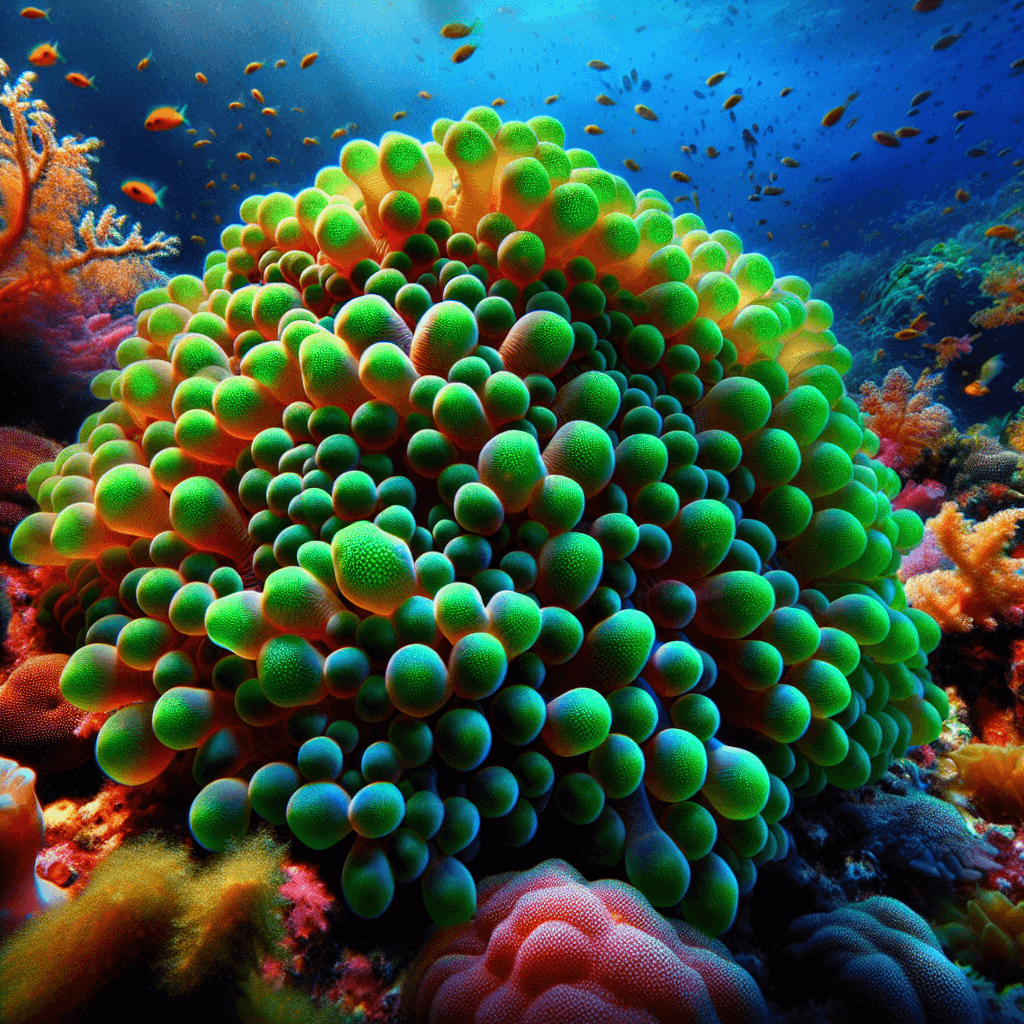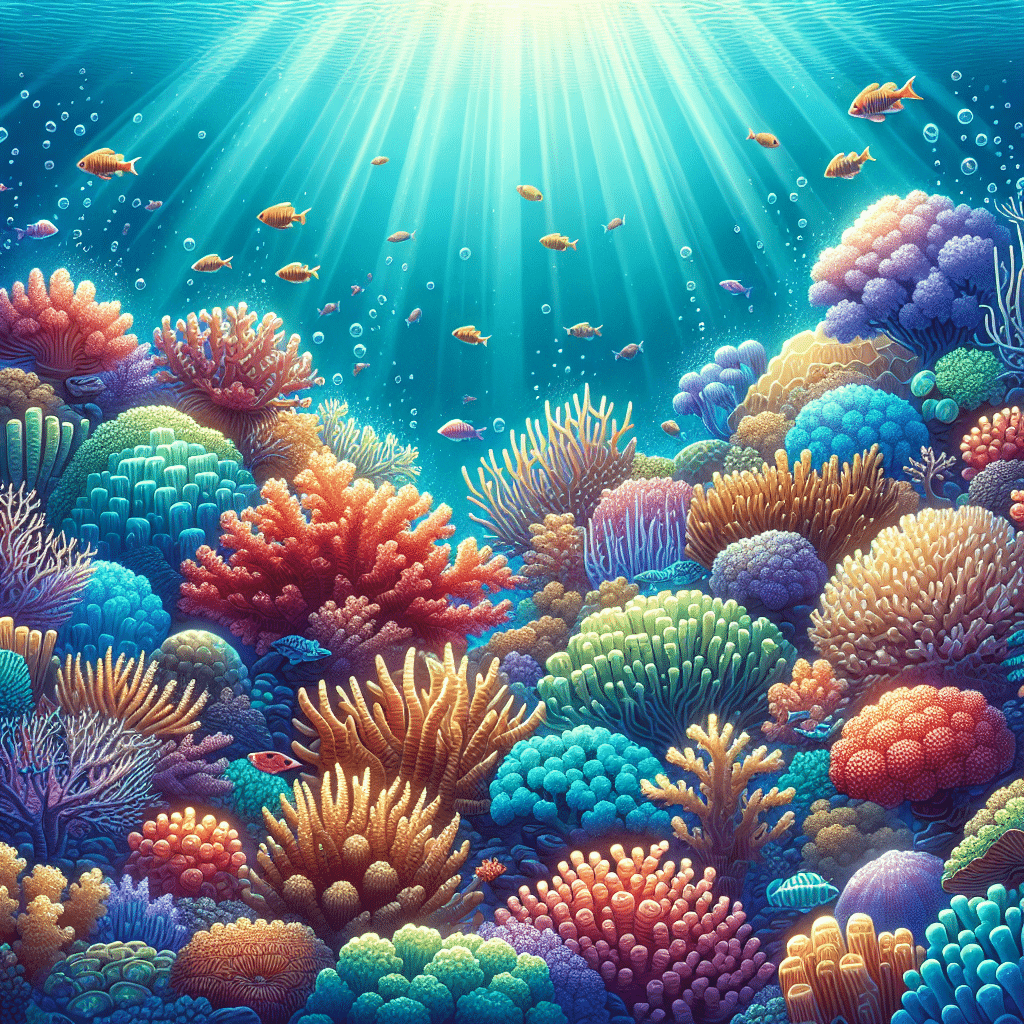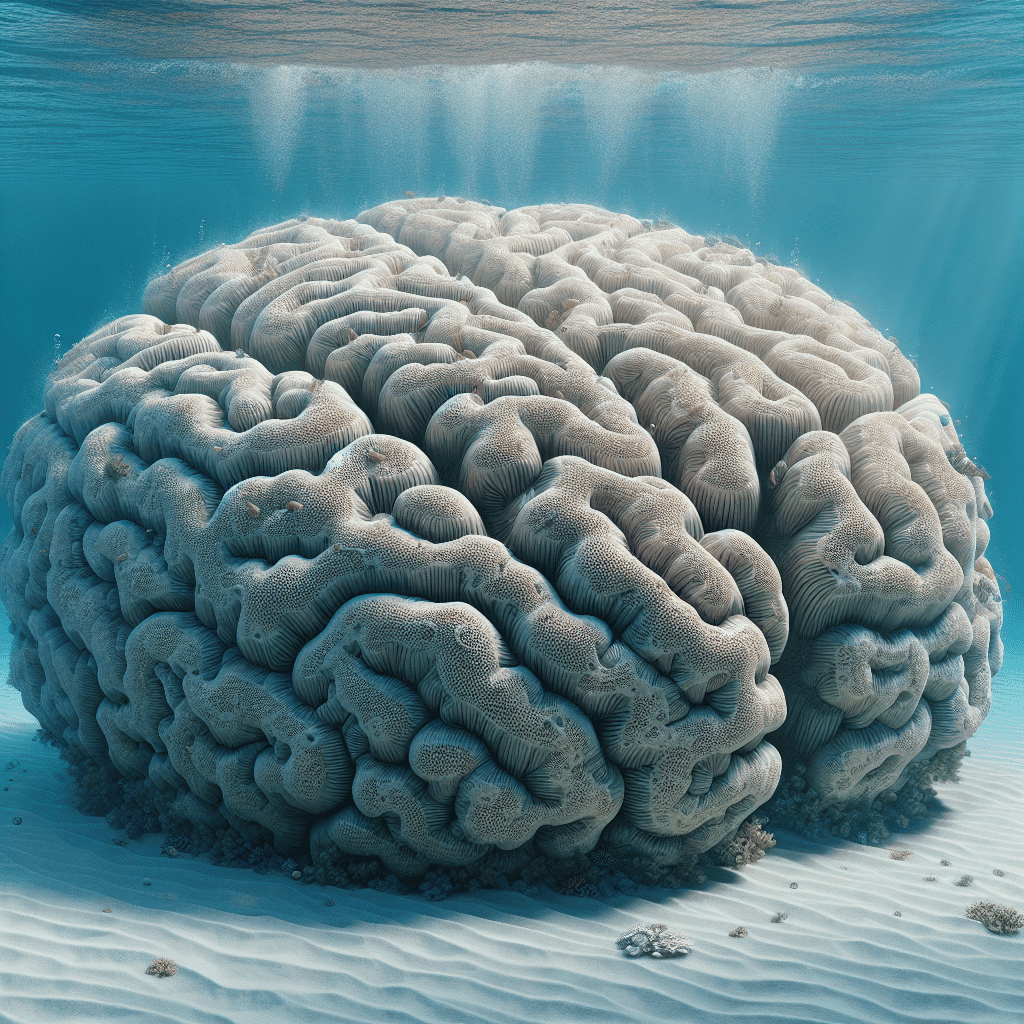Understanding Frogspawn Coral
Overview of Frogspawn Coral
Frogspawn coral, scientifically known as Euphyllia divisa, is a fascinating stony coral that I’m excited to share about. This vibrant coral belongs to the family Caryophylliidae and is native to the Western Pacific Ocean. It’s commonly found in shallow coral reefs and lagoons, adding a splash of color to underwater landscapes. What I find particularly interesting is that frogspawn coral can exhibit various colors, including green, brown, pink, and purple. Some even have fluorescent tips that glow under certain lighting conditions, making them a popular choice for reef tanks.
Frogspawn coral has a unique structure featuring eight tentacles surrounding its mouth. These tentacles are essential for feeding, as they help capture plankton and other small organisms from the water. The stony base of this coral can grow to develop new branches and heads, allowing it to thrive and expand over time.
Habitat and Natural Distribution
In terms of habitat, frogspawn coral thrives in very salty water, typically found in shallow tropical and subtropical regions between latitudes 35°N and 35°S. I find it fascinating that they prefer water temperatures between 23° and 29°C (73.4° and 84.2°F), but they can tolerate temperatures as high as 40°C (104°F) for short periods (NOAA). This adaptability allows them to survive in various environments, making them a resilient species in the coral community.
Frogspawn coral colonies can grow impressively large, reaching up to a meter in height and width. Healthy colonies are known to double in size within a year, depending on factors like water temperature, light exposure, and nutrient availability (Aquatics at Home). Their preference for shallow waters means that they play a crucial role in the ecosystem, providing habitat and food for various marine organisms.
If you’re considering adding frogspawn coral to your aquarium, understanding their natural distribution and habitat needs is key to providing the proper care and conditions for these beautiful corals. For more information on different types of corals, check out our articles on brain coral or torch coral.
Characteristics of Frogspawn Coral
Frogspawn coral, scientifically known as Euphyllia divisa, is a fascinating species that brings a vibrant touch to any reef tank. Its unique features and growth patterns make it an exciting addition for any hobbyist.
Physical Features
Frogspawn coral showcases a striking appearance. It typically has eight tentacles surrounding its mouth, which it uses to catch plankton and other small organisms. The coral can come in a variety of colors such as green, brown, pink, and purple, with some specimens displaying fluorescent tips that glow under specific lighting conditions (Aquatics at Home).
The stony base often grows to develop new branches and heads, contributing to its bushy look. Frogspawn coral colonies can reach impressive sizes, growing up to a meter in height and width. Healthy colonies can double in size within a year, with growth rates influenced by water temperature, light exposure, and nutrient availability (Aquatics at Home).
| Color Variations | Description |
|---|---|
| Green | Bright and lively, often a favorite among hobbyists. |
| Brown | A more muted tone, but still adds depth to the reef. |
| Pink | Soft and vibrant, providing a pastel touch. |
| Purple | Rich and royal, great for contrast. |
Reproduction and Growth
Frogspawn coral has two methods of reproduction: sexual and asexual. It reproduces sexually by releasing eggs and sperm into the water column. After fertilization, the larvae enter a planktonic stage before settling down to form new colonies. Asexually, frogspawn can also create new polyps by budding from the existing colony, allowing it to expand and thrive in the reef environment.
This ability to reproduce both ways is beneficial for maintaining healthy populations in aquariums. Knowing how frogspawn coral grows and reproduces can help me provide the best care and environment for this stunning coral species. For more insights on caring for corals, check out our articles on corals and specific types like torch coral and hammer coral.
Care Tips for Frogspawn Coral
Caring for frogspawn coral can be a rewarding experience, and it’s essential to understand the specific needs of this beautiful coral species to keep it thriving in your reef tank.
Water Parameters
Frogspawn coral thrives in very salty water, typically found in shallow tropical and subtropical regions. Here are some key water parameters to maintain:
| Parameter | Ideal Range | Tolerance |
|---|---|---|
| Salinity | 1.023 – 1.025 SG | Up to 1.027 SG |
| Temperature | 23° – 29° C (73.4° – 84.2° F) | Up to 40° C (104° F) for short periods |
| pH | 8.1 – 8.4 | N/A |
| Alkalinity | 8 – 12 dKH | N/A |
Maintaining stable water parameters will help ensure healthy growth and prevent stress (NOAA).
Lighting and Placement
Frogspawn coral prefers moderate to high lighting conditions. Here are some tips for proper placement:
- Lighting: Use LED lights or T5 fluorescents to provide adequate light. Aim for a PAR (Photosynthetically Active Radiation) level of 100-300 µmol/m²/s.
- Placement: Place frogspawn coral at mid to upper levels in the tank to ensure it receives enough light. They can be positioned in the sand or on a stable rock structure.
- Flow: Moderate water flow is ideal. Too much flow can cause stress and damage to the coral’s delicate tissue.
If you want to learn more about different coral types and their lighting needs, check out our section on corals.
Feeding and Nutrition
Frogspawn coral benefits from proper feeding to thrive. Here’s how to ensure it gets the nutrition it needs:
- Feeding Frequency: Feed frogspawn coral 1-2 times a week.
- Food Type: Use a variety of foods including:
- Liquid coral foods
- Phytoplankton
- Zooplankton
- Feeding Method: Target feed by using a turkey baster or syringe to deliver food directly to the coral’s tentacles. This ensures that the coral captures the food efficiently.
Providing the right nutrients can enhance the growth and color of your frogspawn coral. Consider adding coral supplements to your routine to bolster health.
By keeping these care tips in mind, I can create a thriving environment for my frogspawn coral, allowing it to flourish and contribute to the beauty of my reef tank.
Common Issues with Frogspawn Coral
Frogspawn coral can be a stunning addition to any reef tank, but like all corals, it comes with its own set of challenges. Understanding how to handle common issues such as disease prevention and aggression can help ensure the health and longevity of your coral.
Disease Prevention
One of the first things I learned as a hobbyist is that disease prevention is key to maintaining a healthy frogspawn coral. This species can be susceptible to various ailments if not cared for properly. Here are some tips for keeping my frogspawn coral healthy:
| Prevention Tip | Description |
|---|---|
| Stable Water Parameters | Keeping the water parameters stable is crucial. I regularly check temperature, salinity, and pH levels to ensure they remain within the recommended range. |
| Regular Maintenance | Performing regular water changes and cleaning my tank helps reduce toxins and promote better water quality. |
| Quarantine New Additions | If I add new corals or fish, I quarantine them first to prevent introducing diseases to my existing tank. |
| Watch for Signs of Stress | I keep an eye out for any signs of stress in my coral, such as retracted polyps or discoloration. Quick action can help resolve issues before they escalate. |
For more specific information on coral care, check out our article on corals.
Handling Aggression
Frogspawn coral is known to be an aggressive species. Its polyps are armed with highly poisonous cells to attack any organism that disturbs it. To handle aggression effectively, here’s what I do:
| Aggression Management Tip | Description |
|---|---|
| Space Requirements | I ensure that the frogspawn coral has enough space in the tank, ideally placing it at least a few inches away from other corals to minimize potential aggression. |
| Placement Considerations | I place it in a location where it won’t be easily disturbed by other tank inhabitants. |
| Monitor Tankmates | I choose tankmates carefully, avoiding species known to provoke corals or engage in aggressive behavior. |
| Observe Interactions | I regularly observe how my corals interact with each other and make adjustments as necessary if I notice any signs of aggression. |
If you’re interested in learning more about specific coral types and their care, you can explore articles on torch coral or duncan coral.
By focusing on disease prevention and managing aggression, I can help my frogspawn coral thrive in my reef tank.
Importance of Frogspawn Coral
Ecosystem Role
Frogspawn coral plays a vital role in marine ecosystems. It provides habitat and food for various marine creatures, such as fish, crabs, and shrimp. This coral is not just an aesthetic addition to reef tanks; it is a source of calcium carbonate, which contributes to the building and maintenance of coral reefs (Aquatics at Home).
The eight tentacles surrounding its mouth are essential for its feeding process, allowing it to capture plankton and other small organisms. As a member of the family Caryophylliidae, frogspawn coral is aggressive and has polyps armed with highly poisonous cells, which it uses to defend itself against predators and to attack any organisms that disturb it (Oceanário de Lisboa).
Contribution to Coral Reefs
Frogspawn coral contributes significantly to the structure and diversity of coral reefs. Found in shallow coral reefs and lagoons in the Western Pacific Ocean, it supports the overall health of the reef ecosystem (Aquatics at Home). Coral reefs, which can be found in tropical destinations around the world, are crucial for marine biodiversity and serve as a barrier protecting coastlines from erosion.
Frogspawn coral, like other corals, is essential in providing shelter and breeding grounds for countless marine species. Its presence helps enhance the diversity of the reef, making it a vibrant habitat for various organisms. By understanding the importance of frogspawn coral, I can appreciate not just its beauty in my reef tank but also its role in the larger marine ecosystem. For those interested in exploring more types of corals, check out options like torch coral and bubble coral for your aquarium.
Coral Reef Basics
Formation of Coral Reefs
Coral reefs start forming when free-swimming coral larvae attach to submerged edges of islands or continents. As these corals grow and expand, they develop into three main structures: fringing reefs, barrier reefs, and atolls (NOAA Coral Reef Conservation Program). These structures are crucial for the biodiversity of marine life and provide various benefits to the ecosystem.
| Reef Type | Description |
|---|---|
| Fringing Reef | Grows directly from the shore, forming a shallow lagoon. |
| Barrier Reef | Lies parallel to the shore but is separated by a deeper lagoon. |
| Atoll | A ring-shaped reef that encircles a lagoon, often formed from submerged islands. |
The primary builders of these reefs are stony corals, which are a large order of anthozoans. These corals are colonial organisms made up of hundreds to thousands of individual polyps, all working together to create the reef structure (NOAA Coral Reef Conservation Program).
Coral Colony Structure
The structure of a coral colony is fascinating. Each colony consists of numerous polyps, which are small, soft-bodied organisms. These polyps secrete calcium carbonate, contributing to the reef’s growth and stability. Most corals contain a symbiotic algae called zooxanthellae within their cells. This relationship allows for a mutual exchange: the algae provide the coral with energy through photosynthesis, while the coral offers the algae a protected environment and access to sunlight.
Understanding the formation and structure of coral reefs is essential for anyone involved in reef tank hobbyism. It gives insight into how to properly care for corals like frogspawn coral and other species such as brain coral and hammer coral. By recognizing the ecological roles these corals play, I can create a thriving environment in my own aquarium that mimics their natural habitat.
Coral Reef Ecosystems
Coral reef ecosystems are fascinating and complex, filled with symbiotic relationships and processes that contribute to their structure and function.
Symbiotic Relationships
Most corals, including frogspawn coral, contain a special type of algae called zooxanthellae within their cells. This relationship is mutually beneficial; the algae perform photosynthesis, providing essential nutrients to the coral, while the coral provides a protective environment for the algae (NOAA Coral Reef Conservation Program). This exchange of energy is crucial for the biological productivity and limestone-secreting ability of reef-building corals.
Here’s a quick overview of the symbiotic relationship:
| Component | Role in Relationship |
|---|---|
| Coral | Provides shelter and carbon dioxide to algae |
| Zooxanthellae | Produces oxygen and organic compounds through photosynthesis |
Reef-building Process
Coral reefs begin to take shape when free-swimming coral larvae attach to submerged edges of islands or continents. As these corals grow, they expand and form three major types of structures: fringing, barrier, or atoll (NOAA Coral Reef Conservation Program). The process involves:
- Larval Settlement: Coral larvae settle on a suitable substrate.
- Colony Growth: The settled larvae develop into polyps, which are small, individual coral organisms that form colonies.
- Calcium Carbonate Secretion: Polyps secrete calcium carbonate, which builds up the reef structure over time.
Here’s how the reef-building process looks in a simple table:
| Step | Description |
|---|---|
| Larval Settlement | Coral larvae attach to a substrate |
| Colony Growth | Polyps develop and multiply |
| Reef Formation | Calcium carbonate builds up the reef structure |
Stony corals, which are part of the largest order of anthozoans, play a pivotal role in laying the foundations and growing the reef structures. These colonial organisms can consist of hundreds to thousands of polyps that work together to construct the reef over time.
Understanding these relationships and processes is essential for anyone involved in reef tank hobbyism, particularly when caring for corals like frogspawn. If you’re interested in other coral types and their care, you can explore more about mushroom coral or hammer coral.
Threats to Coral Reefs
Environmental Challenges
Coral reefs face numerous environmental challenges that threaten their survival. One of the most pressing issues is climate change. Rising sea temperatures can lead to coral bleaching, a phenomenon where corals expel their symbiotic algae, zooxanthellae. This loss of algae not only affects the corals’ color but also their ability to receive nutrients, ultimately leading to their decline.
Another significant threat is ocean acidification, a direct result of increased carbon dioxide levels in the atmosphere. As CO2 is absorbed by seawater, it lowers the pH of the ocean, making it more acidic. This acidity can hinder the ability of corals and other marine organisms to calcify, affecting their growth and structural integrity.
Pollution is also a major factor impacting coral health. Runoff containing fertilizers, sediments, and toxins can smother coral colonies and reduce light penetration, which is essential for photosynthesis. In addition, overfishing disrupts the balance of marine ecosystems, leading to an increase in algae that can outcompete and suffocate coral reefs.
| Environmental Challenge | Impact on Corals |
|---|---|
| Climate Change | Coral bleaching, loss of nutrients |
| Ocean Acidification | Reduced calcification, growth issues |
| Pollution | Smothering, reduced light, increased algae |
| Overfishing | Disruption of ecosystems, algae overgrowth |
Conservation Efforts
To combat these threats, various conservation efforts are underway. Marine protected areas (MPAs) have been established to safeguard critical habitats and limit human activities that can harm coral reefs. These areas help to create a more resilient environment where corals can thrive.
Restoration projects are also gaining traction. These initiatives often involve transplanting healthy corals to degraded areas or using techniques like coral gardening, where coral fragments are cultivated in nurseries before being reintroduced to reefs. Such efforts can help rebuild coral populations and restore ecosystem balance.
Community engagement and education play a vital role in conservation. Raising awareness about the importance of coral reefs and the threats they face encourages individuals to take action, whether it be through responsible tourism, reducing plastic use, or supporting sustainable fishing practices.
For those interested in learning more about corals, check out other types like brain coral and torch coral. Each type has its unique characteristics and care requirements, contributing to the rich diversity of reef ecosystems.



